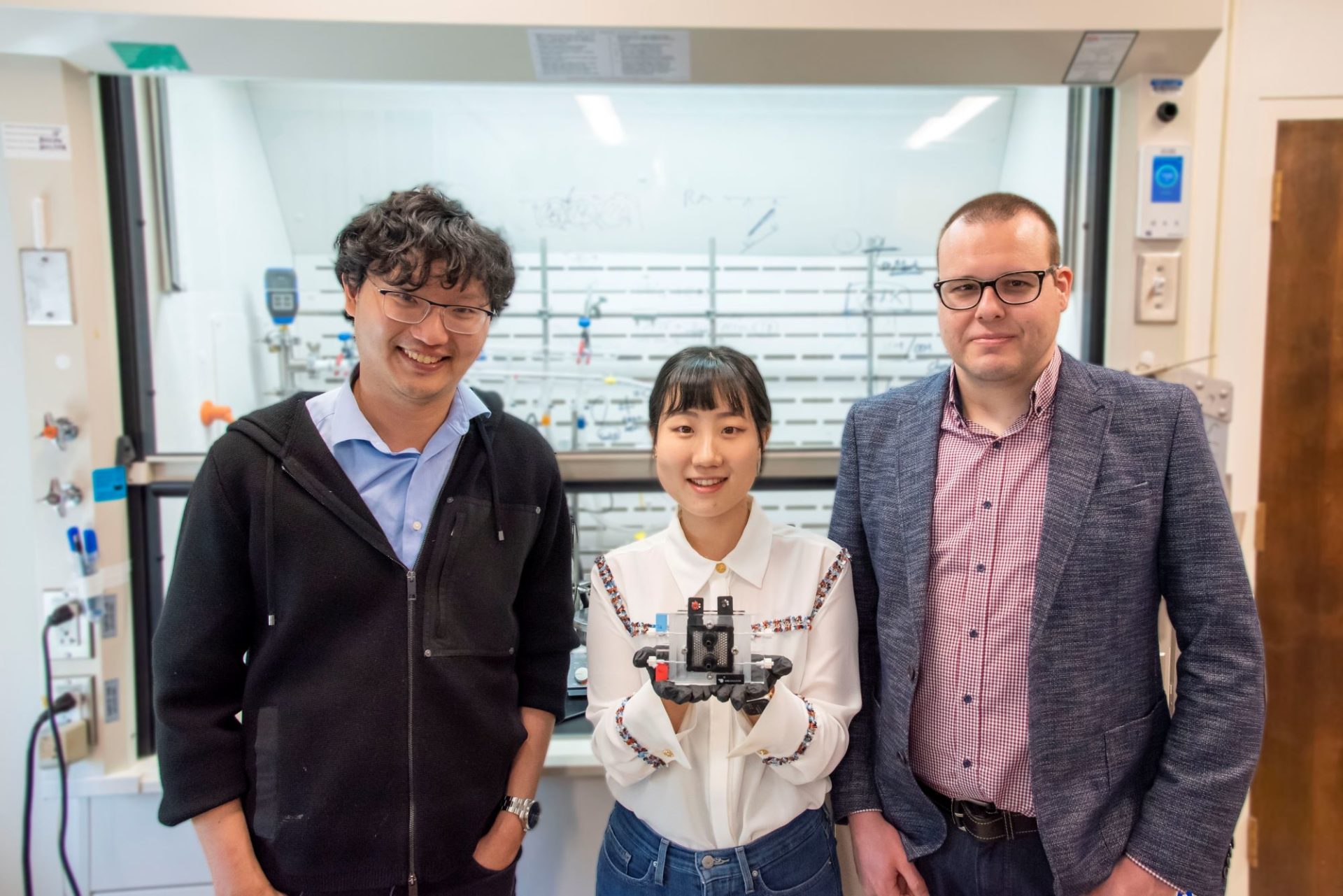Xiao Su, an assistant professor of chemical and biomolecular engineering and researcher at Beckman Institute is working with team members Nayeong Kim, Johannes Elbert, and Choonsoo Kim to develop a water purfication system that “uses an electrified version of dialysis to separate salt and other unnecessary particles from the potable product.” Their method, which has been successfully used in wastewater, uses electrodialysis — flushing salt and other waste products from water, just as our kidneys flush toxins from our veins — but with some adjustments. I am not skilled enough in chemical and biomolecular type things to be able to describe this in my own words, so here is what the article from Beckman has to say:
To save energy, the researchers streamlined the salt separation process with a chemical phenomenon called a redox reaction. The word redox is a portmanteau of the words reduction (which, in chemistry, describes adding electrons to create a negative charge) and oxidation (which means subtracting electrons to create a positive charge). Physically, triggering a redox reaction looks like adding a special polymer-based material to the wastewater before it’s filtered and purified.
Chemically, the results are transformative. Instead of splitting water molecules into positively and negatively charged slices to coax out the salt, the redox reaction changes the charge of the entire water molecule in one fell swoop, achieving the same degree of salty separation with about 90% less energy than traditional water-splitting.
The ultimate goal, is to find a way to tackle water scarcity, to make the massive amounts of water on Earth that is not drinkable, potable and accessible to those who need it. This is a first step in that direction. You can read more about this work on the Beckman website, or find the study that was published in ACS Energy Letters.








